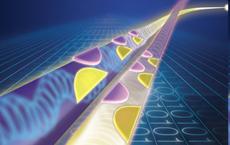Caltech-led engineers solve longstanding problem in photonic chip technology
08 Aug 2011
Stretching for thousands of miles beneath oceans, optical fibers now connect every continent except for Antarctica. With less data loss and higher bandwidth, optical-fibre technology allows information to zip around the world, bringing pictures, video, and other data from every corner of the globe to your computer in a split second.
 |
| Credit: Caltech/Liang Feng |
But although optical fibres are increasingly replacing copper wires, carrying information via photons instead of electrons, today's computer technology still relies on electronic chips.
Now, researchers led by engineers at the California Institute of Technology (Caltech) are paving the way for the next generation of computer-chip technology: photonic chips.
With integrated circuits that use light instead of electricity, photonic chips will allow for faster computers and less data loss when connected to the global fibre-optic network.
"We want to take everything on an electronic chip and reproduce it on a photonic chip," says Liang Feng, a postdoctoral scholar in electrical engineering and the lead author on a paper to be published in the August 5 issue of the journal Science.
Feng is part of Caltech's nanofabrication group, led by Axel Scherer, Bernard A. Neches Professor of Electrical Engineering, Applied Physics, and Physics, and co-director of the Kavli Nanoscience Institute at Caltech.





.webp)

























